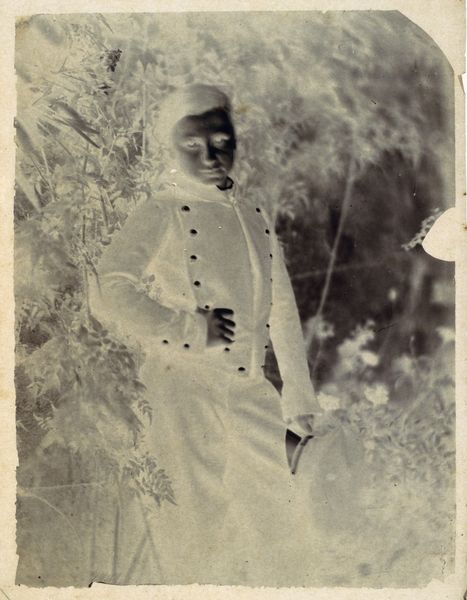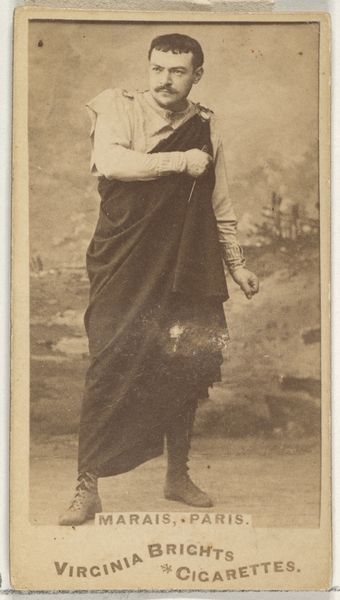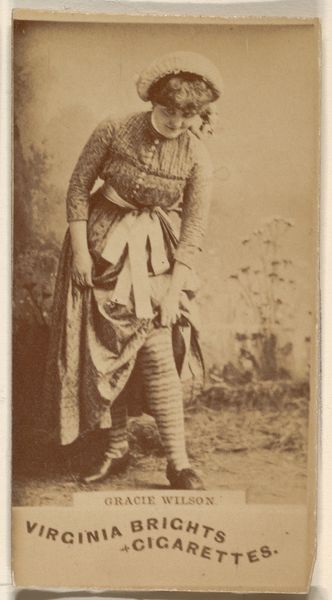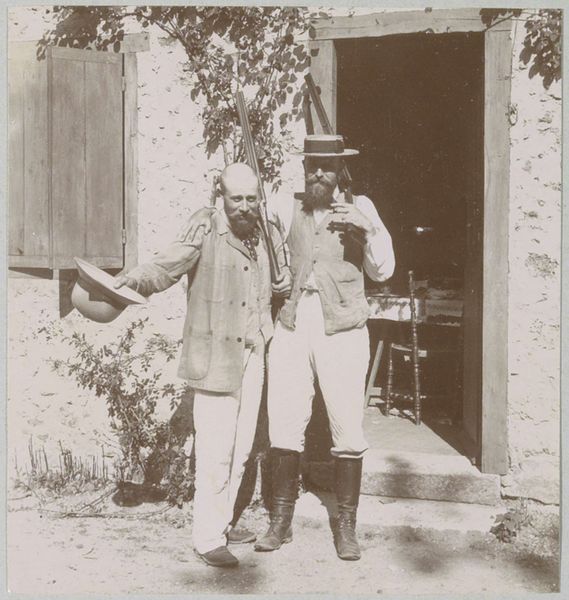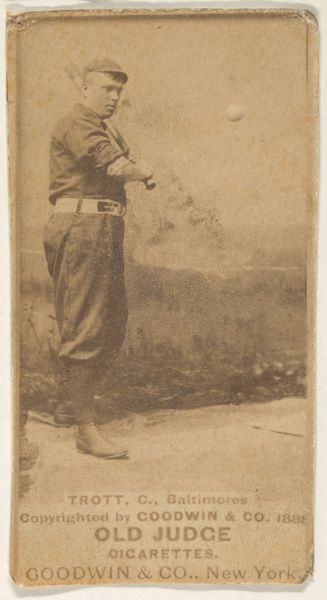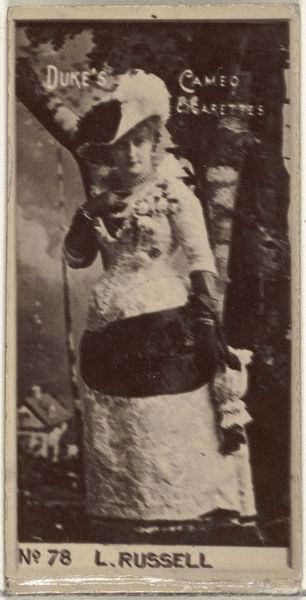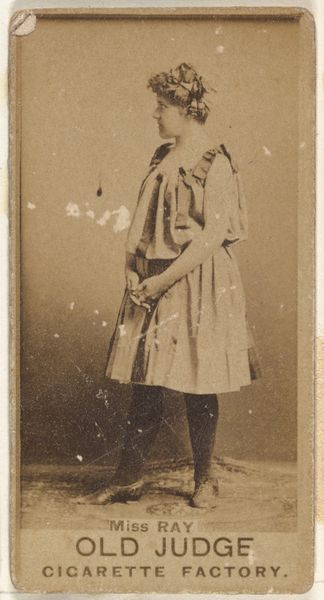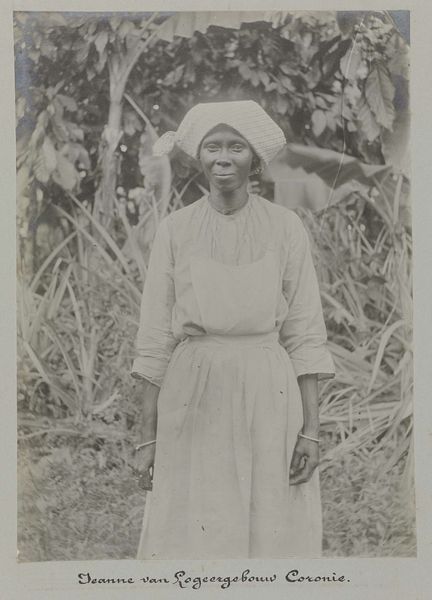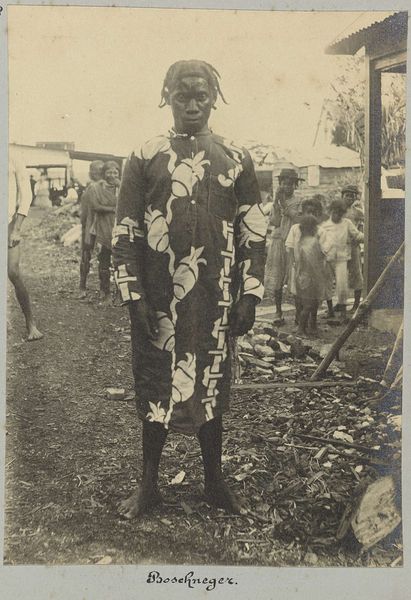
Portret van een in vodden geklede man met een klepper op een zandweg in Marokko c. 1880 - 1910
0:00
0:00
photography, gelatin-silver-print
#
portrait
#
african-art
#
landscape
#
photography
#
gelatin-silver-print
#
realism
Dimensions: height 200 mm, width 150 mm
Copyright: Rijks Museum: Open Domain
Curator: Here we have an arresting image, "Portret van een in vodden geklede man met een klepper op een zandweg in Marokko"—or "Portrait of a man in rags with a clapper on a sandy road in Morocco"—a gelatin silver print likely taken between 1880 and 1910, attributed to Antonio Cavilla. What are your immediate impressions? Editor: Haunting, in a way. The figure looks…worn, yet there’s something undeniably dignified about his posture, the way he holds those clappers. It almost feels like he's offering them, or presenting himself as some sort of mystical messenger, you know? Curator: That sense of presenting, or offering, really strikes me. This image begs questions about representation, power dynamics, and even colonial gaze. This work lands amid shifting perspectives on orientalism and cultural appropriation, with pressing ethical considerations about ethnographic documentation. Editor: Absolutely! It's impossible not to wonder about the context of this portrait. Was he compensated? What was his own narrative, his relationship with the photographer? These are vital questions. I also keep returning to the starkness of the landscape – it feels barren yet familiar, emphasizing the man’s isolation while highlighting his strength. And the tattered robe tells a story, doesn't it? A story of resilience, perhaps. Curator: Indeed. The "rags" become more than mere clothing. They become visual markers of social-economic disparity, even protest, set against a backdrop of encroaching colonialism. Understanding this historical context challenges us to look beyond superficial aesthetics. And consider how such images can both perpetuate and subvert harmful stereotypes. Editor: It all feels so relevant, even today. Makes you wonder how much has actually changed, doesn't it? You're seeing the photograph on the wall of the gallery, removed from its creation. Is it art? Is it ethnography? It all feels so murky. Curator: It remains a critical dialogue—a constant negotiation between intention, interpretation, and impact, forcing us to acknowledge our own positions within this complex interplay. Editor: Yeah. Seeing him here, framed and hung on a wall...I think what resonates most is the quiet question in his eyes, demanding to be seen, not just as an object, but as a human. That simple act of bearing witness, is so, so powerful.
Comments
No comments
Be the first to comment and join the conversation on the ultimate creative platform.
